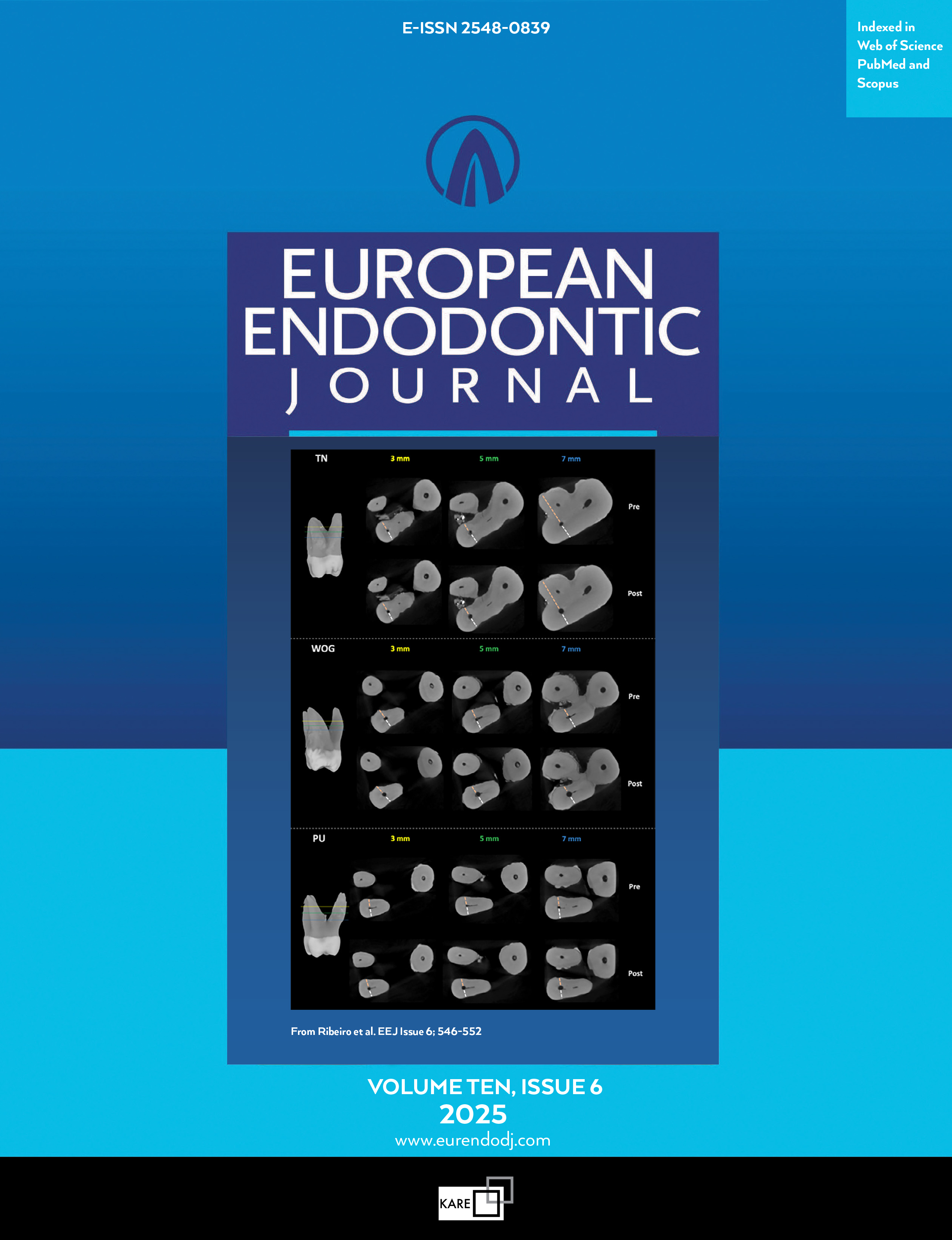Metrics
2024 IMPACT FACTOR
5 year Impact Factor
Eigenfactor Score
2024 CiteScore
Journal Citation Reports
(Clarivate 2025, JIF Rank)
Efficacy of Continuous Chelation With Etidronate And Sequential Chelation With Chitosan On Bacterial Reduction In Teeth With Pulp Necrosis: A Double-Blind, Randomized Clinical Trial
Karthikeyan Anbalagan1, Amit Jena1, Luna Samanta2, Akhil Changanath3, Anwesha Pradhan2, Govind Shashirekha4, Vinay Shivagnage51Department of Conservative Dentistry and Endodontics, Sriram Chandra Bhanja Dental College and Hospital, Utkal University, Odisha, India2Department of Zoology, Redox Biology and Proteomics Laboratory, Ravenshaw University, Cuttack, India
3Department of Public Health Dentistry, Sriram Chandra Bhanja Dental College and Hospital, Utkal University, Odisha, India
4Department of Conservative Dentistry and Endodontics, Institute of Dental Sciences, Siksha O Anusandhan (Deemed to be) University, Odisha, India
5Department of Endodontology, Oman Dental College, Muscat, Oman
Objective: This study compared the efficacy of continuous chelation with etidronate and sequential chelation with chitosan to traditional chelation with EDTA in reducing bacterial levels in teeth with necrotic pulp.
Methods: Sixty patients with single-rooted and single-canalled teeth with pulp necrosis were randomly divided into three groups based on the irrigation protocol with passive ultrasonic activation (PUI). G1 (Control): NaOCl/EDTA+PUI, G2: NaOCl/etidronate+PUI, and G3: NaOCl/chitosan+PUI. Microbiological samples were taken before (S1) and after the root canal preparation and irrigation protocol (S2). Total bacterial counts were measured using 16S ribosomal RNA gene-based real-time quantitative polymerase chain reaction. Statistical analysis was performed using the Wilcoxon signed rank test and the Kruskal-Wallis test (P<0.05).
Results: All S1 samples tested positive for bacteria, and total bacterial counts from S1 to S2 were significantly reduced across all three groups (p<0.001), with a mean reduction of 97.7% in G1, 96.3% in G2, and 96.8% in G3. No significant differences were observed among the groups (p=0.345). Bivariate and multivariate analyses revealed that none of the patient-related or tooth-related variables had a significant effect on bacterial reduction (p>0.5).
Conclusion: All three irrigation protocols, including continuous chelation with etidronate, sequential chelation with chitosan, and traditional chelation with EDTA, significantly reduced bacterial levels in teeth with primary endodontic infections.Etidronate and chitosan may serve as alternatives to EDTA; however, further prospective clinical studies are required to validate and recommend their use in clinical practice.(EEJ-2025-07-114)
Keywords: Chitosan, etidronate, necrotic pulp, root canal irrigation, ultrasonic activation
Manuscript Language: English
(138 downloaded)



